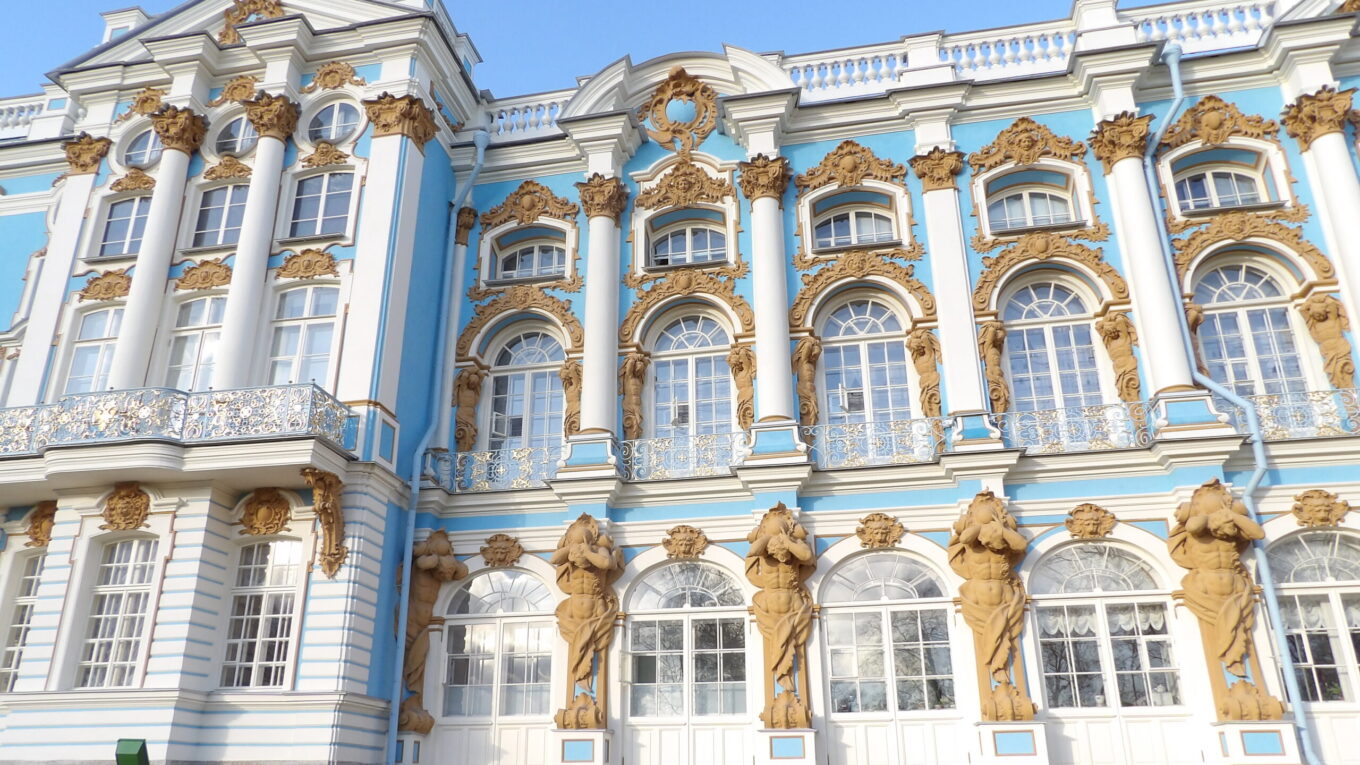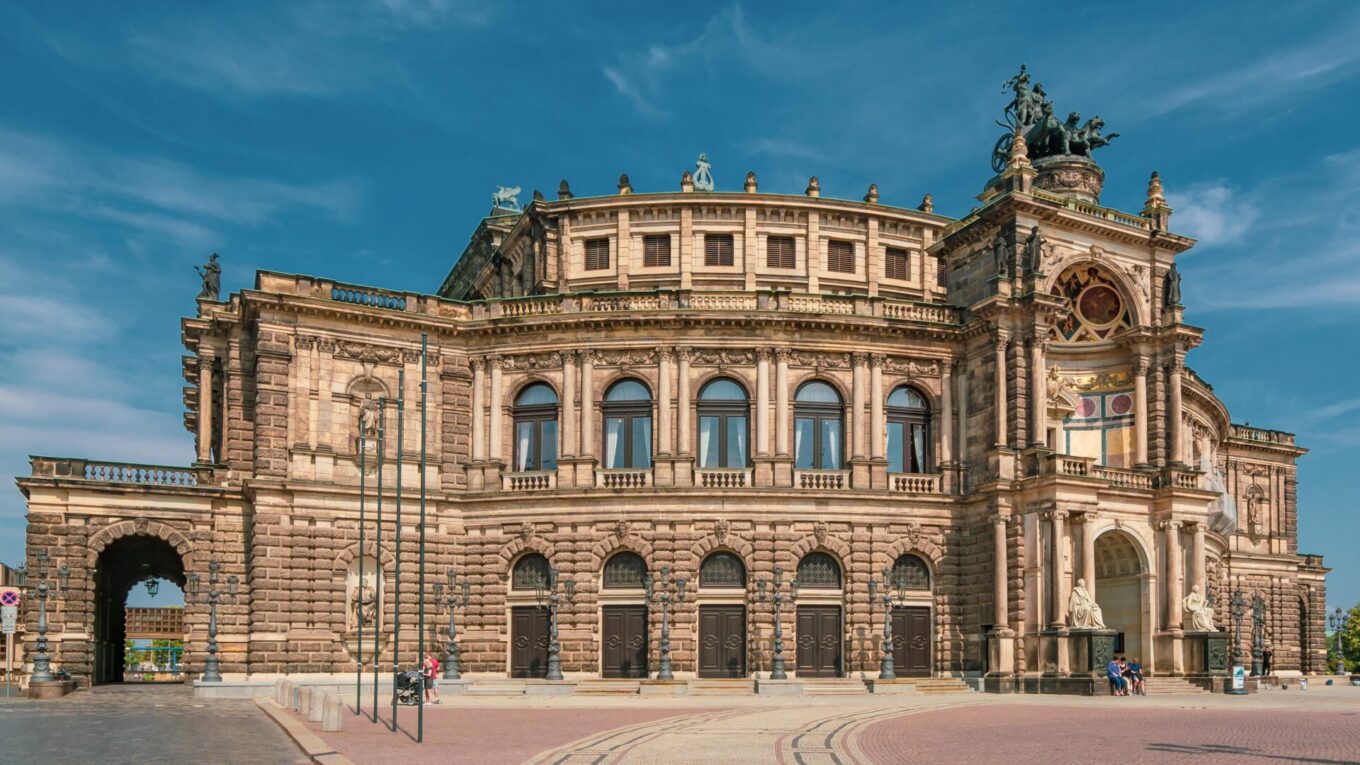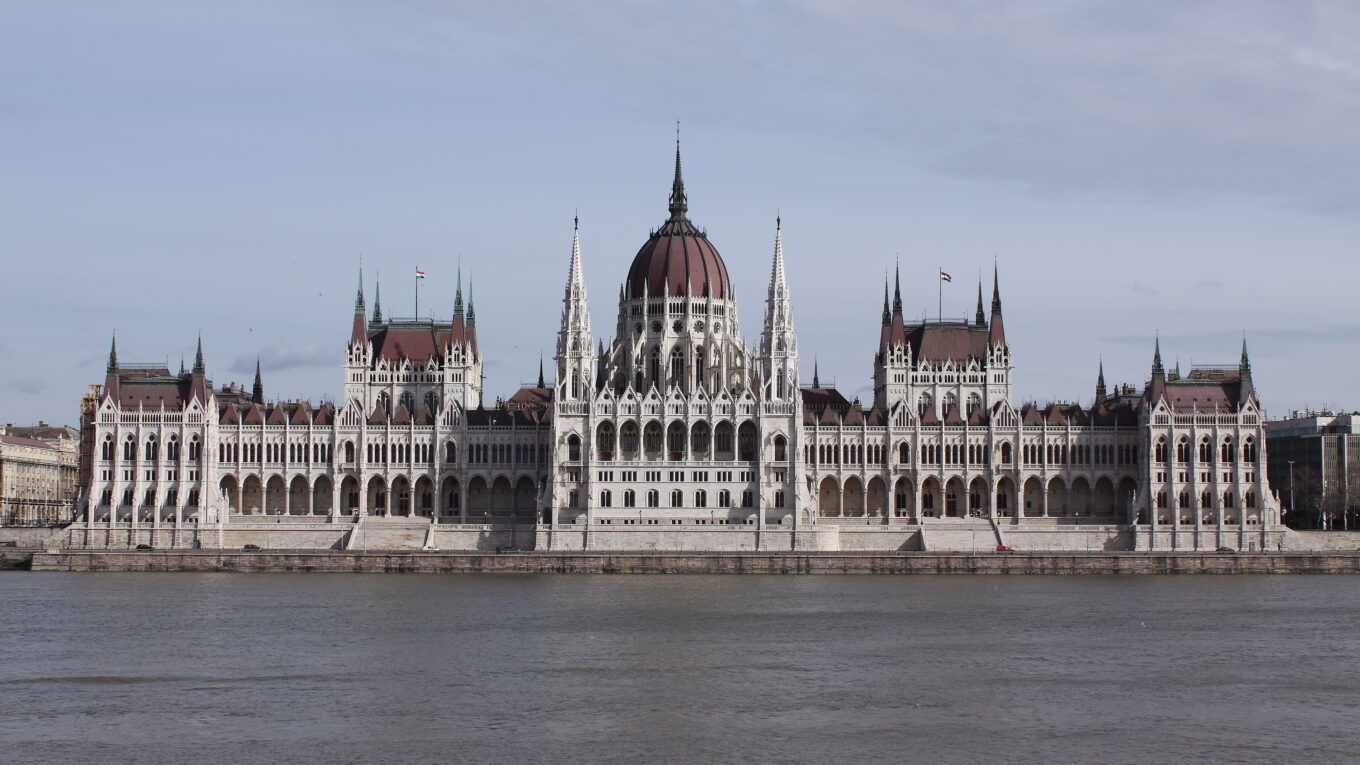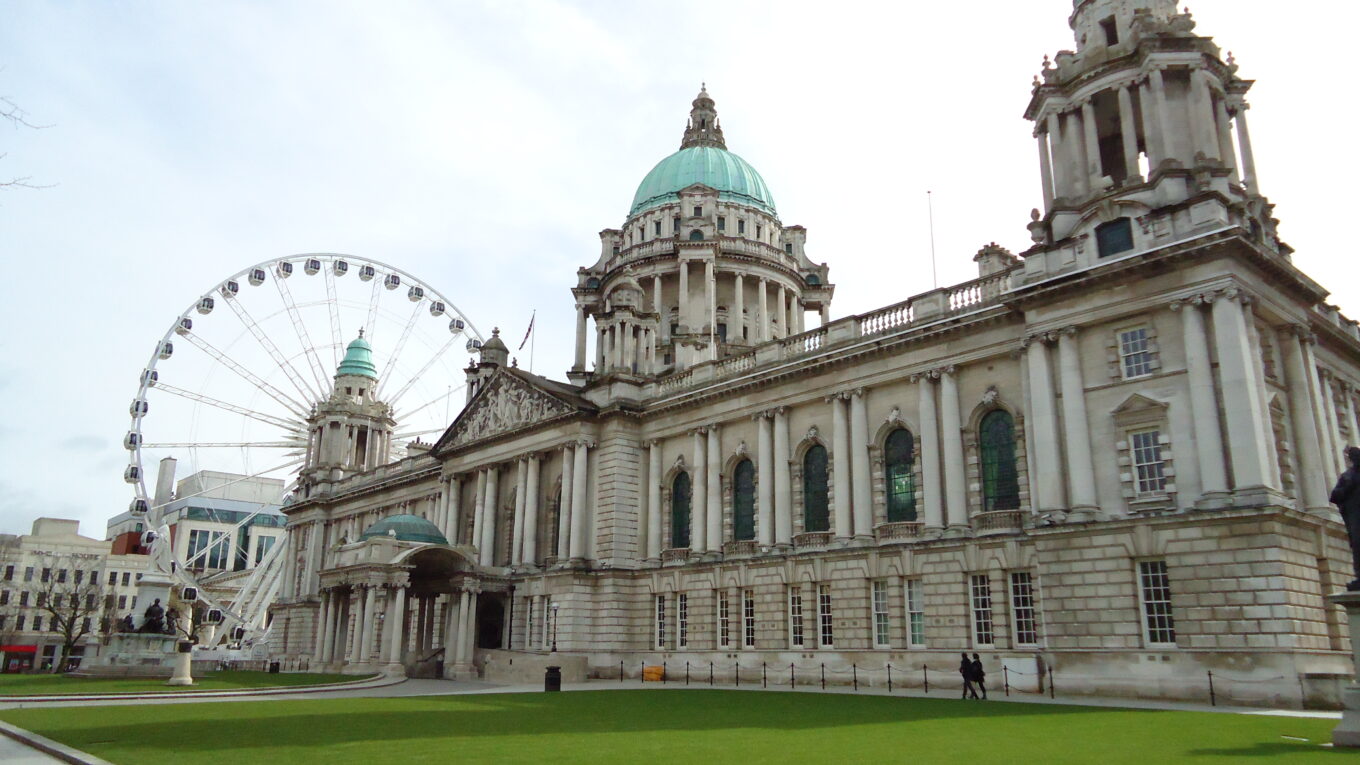Top 15 Examples of Rococo Architecture
Rococo was an exuberant, flashy form of architecture that was prevalent in Europe during the 1700s. The Rococo Style emerged in the later stages of the Baroque Age, and it greatly exaggerated many of the same elements found in Baroque Architecture. Rococo buildings are elaborately decorated, and they often contain gold and other lavish materials. Rococo Architecture is found primarily in the large palaces built by the European nobility of the 18th century. The list below will highlight 15 of the world’s greatest examples of Rococo architecture and show how the Rococo Style influenced architectural history.
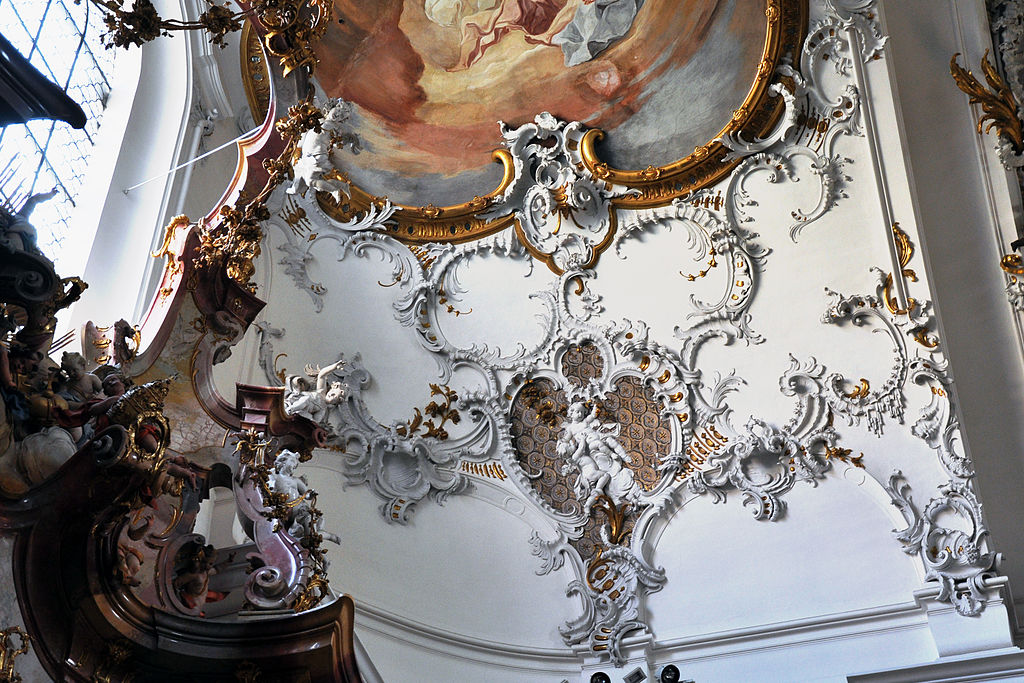
When was the Rococo Period?
The Rococo period began in the 1730s and was a popular style for the remainder of the 1700s. It emerged toward the end of the Baroque Age, and it was followed by the Neoclassical Age.
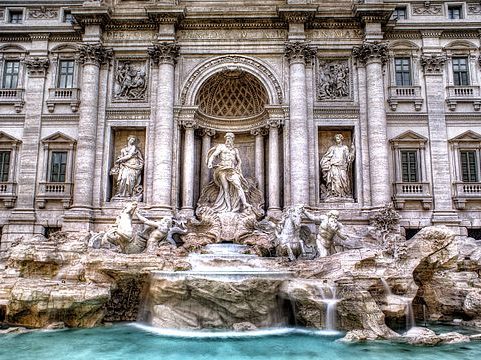
Late 16th century – Late 18th century
Before the Rococo Age, there was the Baroque Age, which emerged in the late 16th century. Many elements from Baroque Architecture were later exaggerated in the Rococo Age, like the use of intricate details and complicated geometries. The end of the Baroque Age would overlap with much of the Rococo Age, and both styles were utilized simultaneously during the 1700s.

Mid to Late 18th century
Rococo Architecture emerged in France in the 1730s and would quickly spread to other countries. The expensive materials and grandeur of Rococo Architecture made it a popular style, particularly in the many palaces of Europe. Many wealthy individuals would also renovate existing buildings with Rococo interiors as a way to show off their wealth and status.
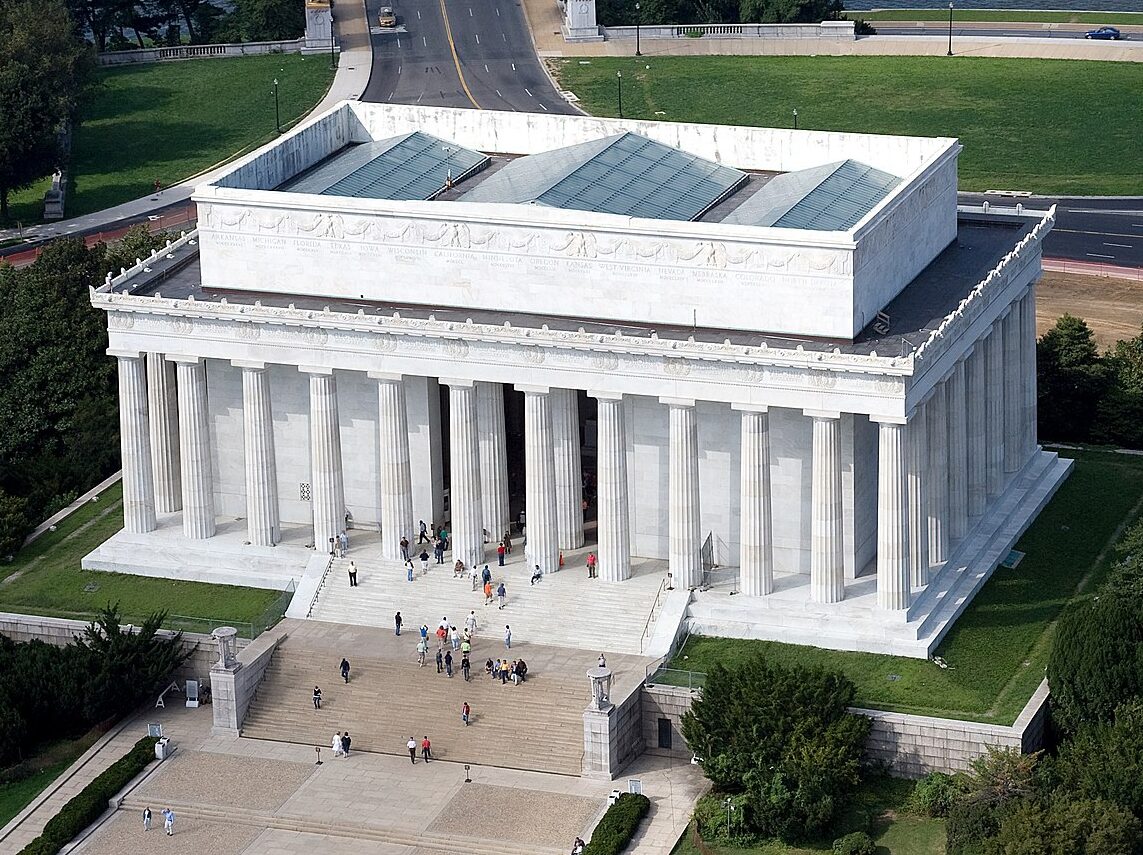
Late 18th century – 20th century
During the later stages of the Rococo Period, a new building form known as Neoclassical Architecture emerged in Europe. It was created in response to the excessive complexity of Rococo Buildings, and it closely followed older works of architecture from the ancient Greeks and Romans. By the 19th century, the Neoclassical Style would be widely adopted throughout the entire world.
Characteristics of Rococo Architecture
Excessive Details
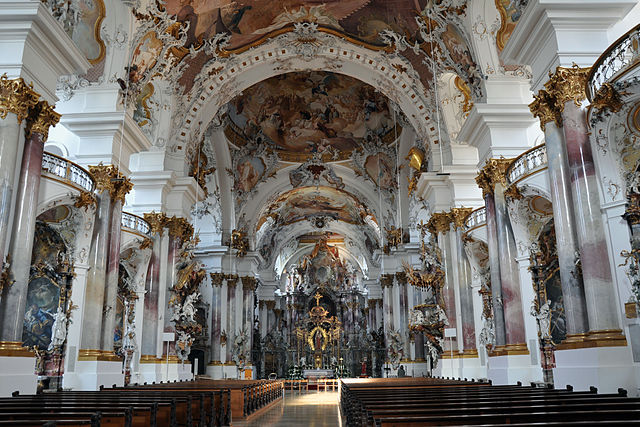
One of the most iconic elements found throughout Rococo Architecture is the use of excessive details. This theme was also prevalent in Baroque Architecture, but it was greatly amplified during the Rococo Age. In the image above, you can see the interior of the Zwiefalten Abbey in Zwiefalten, Germany. The space is completely covered with intricate details, including statues, carvings, and frescoes. Rococo Architecture was often used in religious buildings to inspire local populations and show the prosperity and prestige of the Christian Church.
Bright Colors
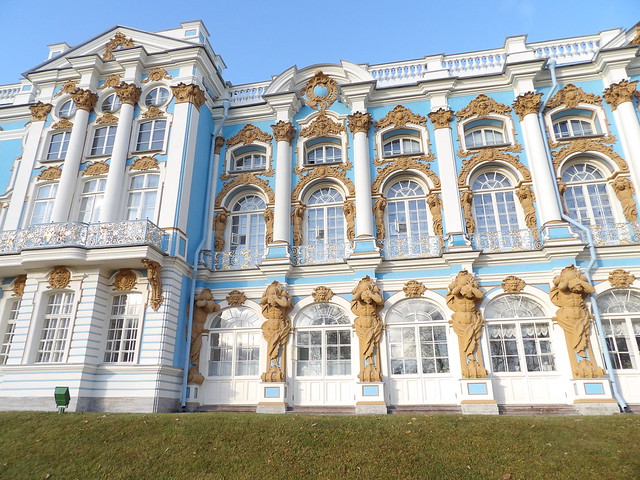
Bright Colors are also found throughout Rococo Architecture. Many Rococo buildings contain bright pinks, blues, and yellows – often in soft pastel shades. In the image above, you can see the front facade of the Catherine Palace in St. Petersburg, Russia. Here, the exterior is decorated with three colors: white, gold, and a bright sky blue. The use of bright colors is not unique to the Rococo Period, and it’s a characteristic found in many buildings from the 16th-18th century.
Gold & Other Lavish Materials

Gold was one of the most widely used materials during the Rococo Age, and many of the great kings and queens of Europe had their palaces completely covered with gilded details. Gold was also heavily utilized in the Baroque Age, but during the Rococo period, this practice was taken to a whole new level. In the image above, you can see one of the rooms inside the Catherine Palace in St. Petersburg. Here, the amount of gold and other expensive materials was a way to show off the immense wealth of the Russian Monarchy.
Elements from Classical Architecture
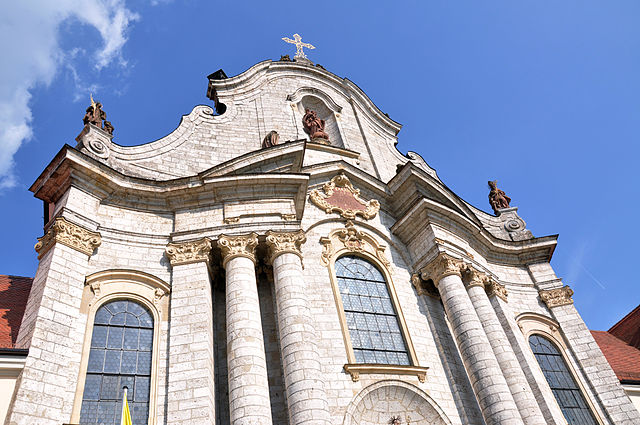
Elements from Classical Architecture can also be found in many different works of Rococo Architecture. These elements include pediments, round arches, statuary niches, and the use of columns from the Doric, Ionic, and Corinthian orders. These Classical Elements originated thousands of years ago, during the days of the Ancient Greeks and Romans. These features are also heavily utilized in earlier works of Renaissance and Baroque Architecture, and they can often be found hidden in between other Rococo design elements. In the image above, you can see several Corinthian Columns and some statuary niches within the facade of Zwiefalten Abbey.
Rococo Frescoes
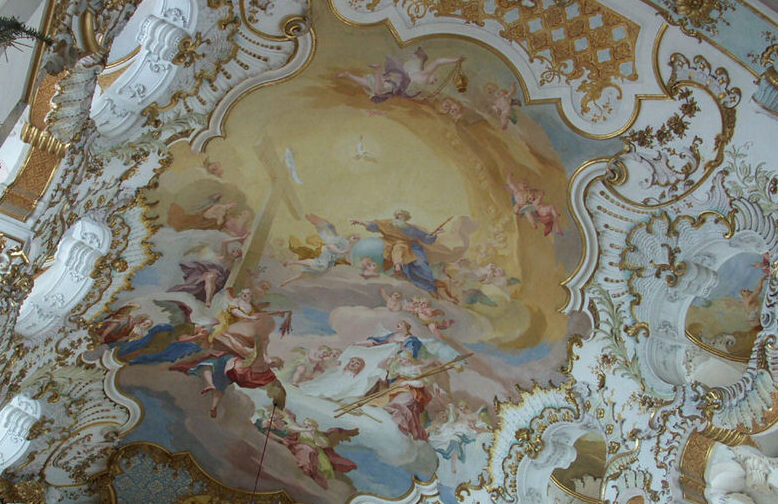
The Rococo Age also had a dramatic influence on the art world. Rococo painting was very popular in the 18th century, and many of the world’s greatest museums contain impressive works from this time period. Rococo Painting was particularly popular in Venice, which was the hometown of famous artists like Tiepolo and Canaletto. In the image above you can see a ceiling fresco within the Pilgrimage Church of Wies. Here the artwork is blended with other Rococo design elements like intricate carvings and gold-plated trim.
Rococo Sculpture

Rococo Sculpture is another element found throughout most Rococo Buildings. Rococo Sculptures are lively and complex and follow the same ideas found in Baroque Sculptures by artists like Gian Lorenzo Bernini. The image above shows two figures carved from white marble within the Zwiefalten Abbey. In between the two statues, there is even more intricate stonework, which is found throughout the rest of the space.
What are the Greatest Examples of Rococo Architecture?
Below is a list of some of the world’s greatest examples of Rococo Architecture. The order of the buildings is based on their size, splendor, and overall influence on the evolution of the Rococo Style.
1. Catherine Palace – St. Petersburg, Russia

St. Petersburg was once the capital of Russia, and it is known for its abundance of large palatial buildings. There are a few impressive palaces that date to the Baroque Age, but the city’s most impressive example of Rococo Architecture is the Catherine Palace. It’s located 15 miles (25 km) south of the city center, and it was constructed in the mid-1700s. The exterior of the palace shows several of the key elements of Roccoco Design. The overall facade is a very bright blue color, and there is an abundance of gold trim around all of the fenestrations.


The interior of Catherine Palace also contains many other elements found in Rococo Architecture. The left image above shows the Palace Ballroom, which is a large open space that was meant for gatherings and parties. The floor is made from an elaborate assortment of fine woods, and the walls are covered with gold-plated carvings. The right image above shows a different room inside the palace, and here you can see some of the typical curving and twisting forms that are found in Rococo detailing. Today, the Catherine Palace is listed as a UNESCO World Heritage Site, along with several other important buildings located in St. Petersburg.
2. Würzburg Residenz – Würzburg, Bavaria, Germany

Germany contains some of the most impressive Rococo Buildings anywhere in Europe. The Würzburg Residenz is a large palace located within the city of Würzburg, and it was constructed in the heart of the Rococo Age during the mid-18th century. The image above shows the main chapel within the palace, which contains all of the signature elements found in Rococo Architecture. This chapel really embodies the excessiveness and exuberance of the Rococo Age. Nearly every surface is decorated to the highest degree, and expensive materials like gold are used extensively throughout the space.
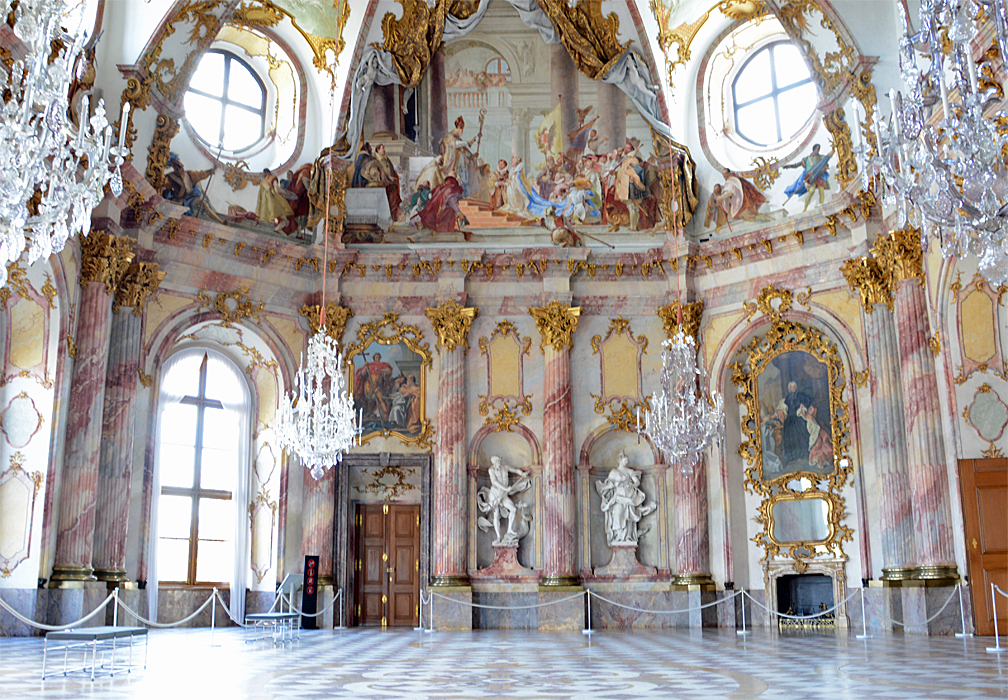
The Würzburg Residence is also listed as a UNESCO World Heritage Site, and it’s known for having a unique blend of both Rococo and Baroque design elements. The palace is also famous for its many frescoes by the Venetian painter Giovanni Battista Tiepolo. Although much of his work is located in Venice, there are dozens of Tiepolo Frescoes throughout Western Europe. Today, many people visit the charming German city of Würzburg to see its many impressive buildings, which include the Würzburg Residenz, Würzburg Cathedral, and the Marienberg Fortress.
3. Schloss Nymphenburg – Munich, Bavaria, Germany
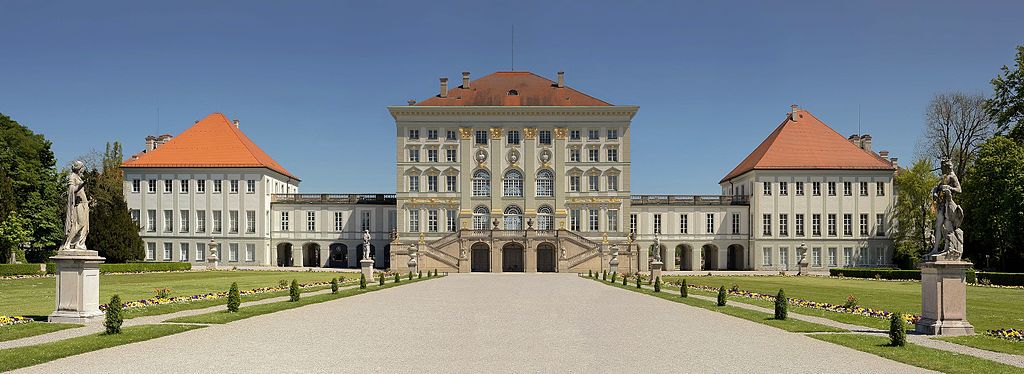
The Duchy of Bavaria was an entity within the Holy Roman Empire that reached the peak of its power and prestige during the 18th century. As a result of this, the modern German region of Bavaria contains one of the highest concentrations of Rococo Buildings anywhere in Europe. Munich, the capital of Bavaria, is filled with several Rococo Palaces, the largest of which is Nymphenburg Palace. Much of the palace’s exterior is a blend of Rococo and Baroque, but most of the interior spaces are elaborately decorated in the Rococo Style. The palace is surrounded by the Nymphenburg Palace Park, which is one of the largest green spaces in all of Munich.
4. Queluz National Palace – Quelez, Portugal

The Queluz National Palace was constructed by King Peter III of Portugal in the mid-1700s. It was designed to be a summer retreat for the Portuguese Royal Family. The palace is located about 8 miles (13 km) away from Lisbon, and its within the Sintra Region, which is home to other impressive works of architecture like Pena Palace and the Moorish Castle of Sintra. The Queluz National Palace is known for its impressive collection of Rococo Style fountains, many of which depict different deities from Roman and Greek Mythology.
5. Asam Church – Munich, Bavaria, Germany


The Asam Church was built and designed by two brothers as their private chapel. The Asam brothers were well-established artists and craftsmen within the German city of Munich during the mid-18th century. They wanted to build their own church to show off their ability to sculpt and design. Asam Church is a great example of the many works of Rococo Architecture found in Munich and the rest of Bavaria. Both the interior and exterior of the church contain all of the typical elements from the Rococo Age, including gold leaf, extravagant details, and many works of Rococo Sculpture.
6. Linderhof Palace – Ettal, Bavaria, Germany

Linderhof Palace is located in the foothills of the Alps, on the southern edges of the German region of Bavaria. It is one of several large palaces designed by King Ludwig II. Ludwig was known as an architectural enthusiast, and he spent enormous sums of money to complete his personal projects. Linderhof Palace contains a large series of gardens, which include several different fountains and reflecting pools. Linderhof Palace was completely rebuilt long after the Rococo Age in the mid-1800s, but Ludwig II designed it in the spirit of the Rococo Architecture that is found throughout Bavaria.
7. Zwiefalten Abbey – Zwiefalten, Germany
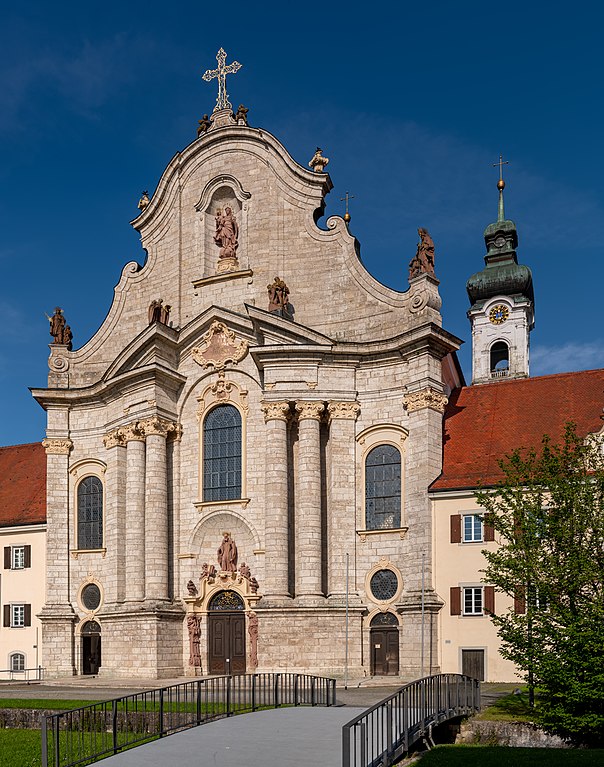

Zwiefalten Abbey is a religious institution with a foundation dating back to the 11th century, during the Romanesque Age. The current abbey was constructed in the mid-1700s, and it has a strong connection with the many Rococo Buildings located in the nearby region of Bavaria. The front facade of Zwiefalten Abbey curves in several directions, and it contains a lot of the complicated geometries found in Late Baroque and Rococo Architecture. The interior of the abbey contains many other elements from the Rococo Style, including intricately carved details, gold trim, and Rococo artwork.
8. Helbling House – Innsbruck, Austria


(right) Photo by böhringer friedrich from Wikimedia Commons
Helbling House was originally the private residence of a wealthy noble family living in Innsbruck. The original building dates to the 16th century, but it was embellished in different architectural styles over time. During the Rococo Age, carved wooden details were added in between the existing windows on the upper levels. This was a common practice throughout European cities, and many people did a lot to “spruce up” their residences and improve them during different architectural ages.
10. Munich Residenz – Munich, Bavaria, Germany


The Munich Residenz was the inner-city palace for the ruling family in the Duchy of Bavaria. It was one of two large Rococo Palaces in Munich, the other being Nymphenburg Palace. The Munich Residenz contains wings designed in the Renaissance and Baroque styles, but many of the interiors were also updated during the Rococo Age. Unfortunately, large portions of the Munich Residenz were completely destroyed in the Allied Bombing of Munich during WWII, and most of what exists today was rebuilt after the war.
9. Hôtel de Soubise – Paris, France
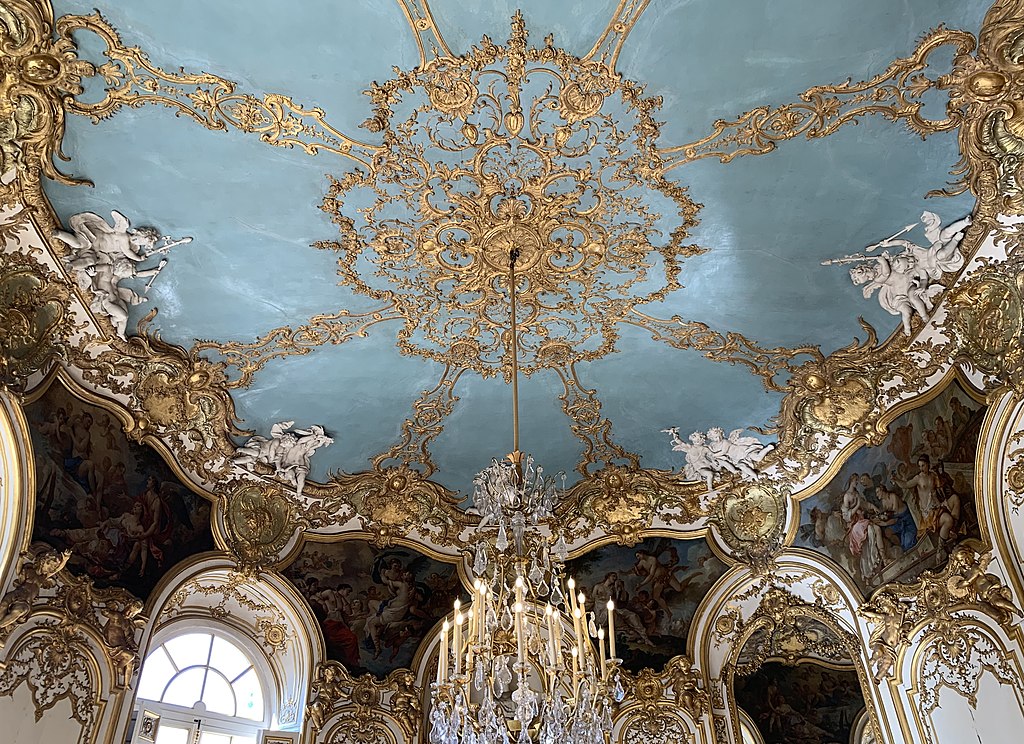
The Hôtel de Soubise is a large mansion located in Paris, France. The building itself was originally built in the Baroque Age, but most of the interiors were redone in the Rococo Style. The Rococo movement began in France, and it was a response to the more toned-back style that was popularized by French King Louis XIV. The image above shows the Salon Ovale de la Princesse, one of the most lavishly decorated rooms inside the mansion. These organic undulating carvings can be found in many Rococo Interiors, and they are a great example of the over-the-top detailing found throughout Rococo Architecture.
11. Pilgrimage Church of Wies – Wies, Bavaria, Germany
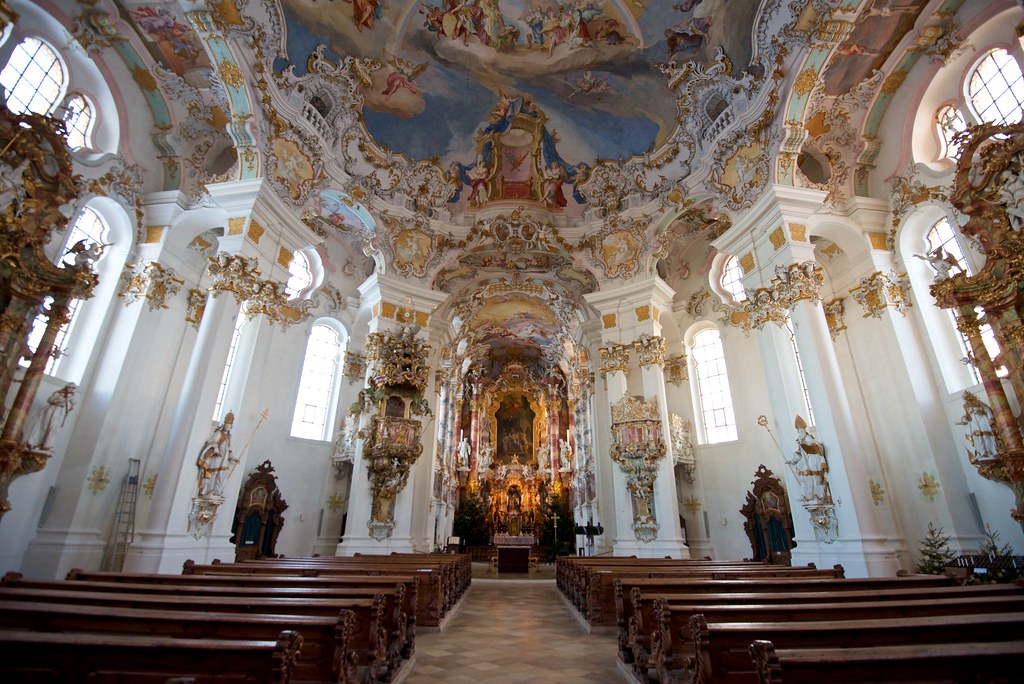
Known as Wieskirche in German, the Pilgrimage Church of Wies is one of many great examples of Rococo Architecture located in the German region of Bavaria. The plan of the church is a perfect oval, which is a shape found throughout many Late Baroque and Rococo buildings. The interior of the church contains all of the typical features of Rococo design, including bright colors, intricate details, lavish materials, and different forms of Rococo artwork. Due to its historical significance and architectural importance, the Pilgrimage Church of Wies was recognized as a UNESCO World Heritage Site in 1983.
12. Amalienburg – Munich, Bavaria, Germany

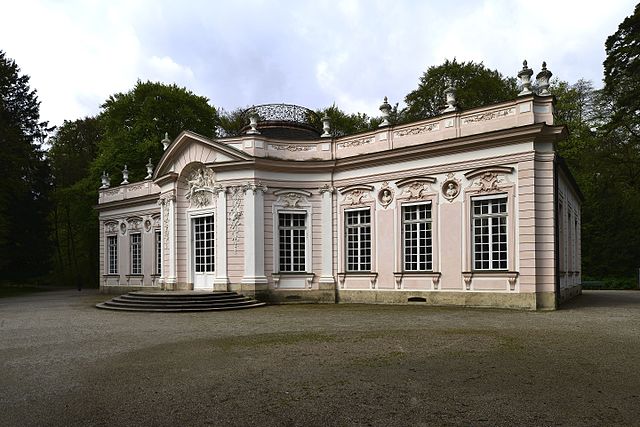
The Amalienburg is a small pavilion that’s located in the park surrounding Nymphenburg Palace in Munich. The exterior of the building is colored in a pale shade of pink, which is a common element found in Rococo Architecture. The interior is a complex array of Rococo carvings, blended with silver plating and large mirrors. Mirrors were a luxurious good during the 18th century, and many wealthy people installed them within their palaces to impress their guests and show off their fortunes.
13. Falperra Church – Braga, Portugal
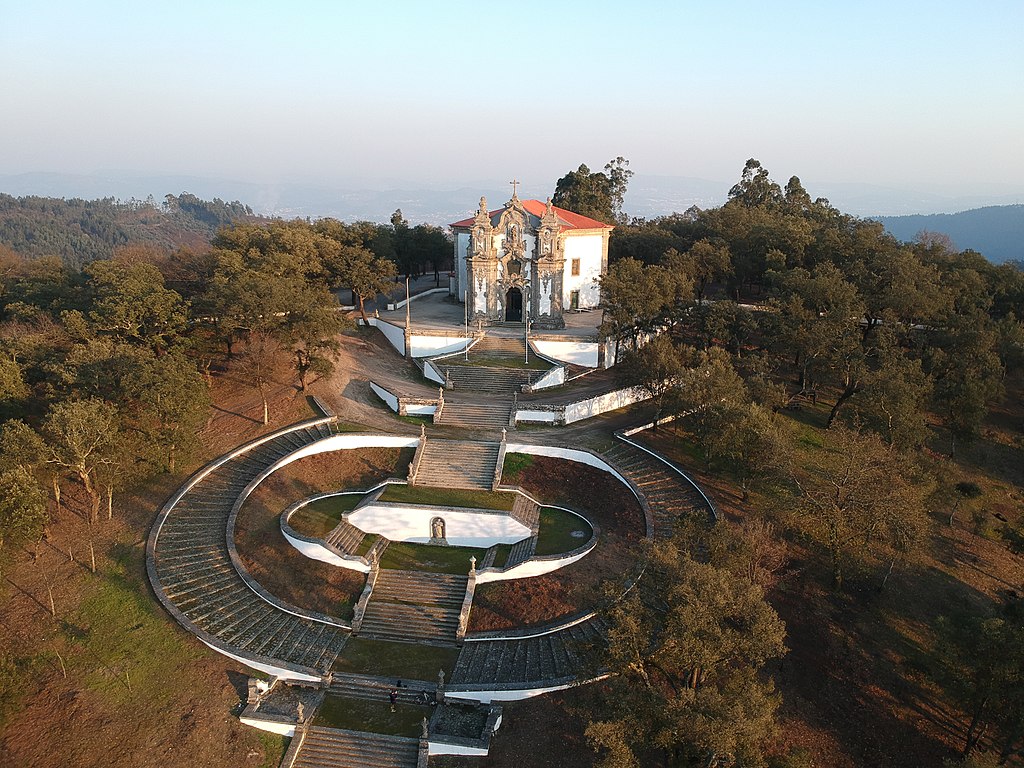
Located in the mountains of Northern Portugal, the Falperra Church is a remote building that dates to the 18th century. It’s located at the end of a large monumental staircase that descends hundreds of feet down the steep hillside. The main chapel has a very imposing facade that resembles many of the other Rococo buildings found throughout Portugal. Although smaller than many other buildings on this list, the Falperra Church is noteworthy for its striking position overlooking the Portuguese countryside.
14. Palace of the Marqués de Dos Aguas – Valencia, Spain

Valencia is a city on the Eastern Coast of Spain that is filled with many iconic works of Gothic Architecture. It was an important trading center, and it prospered throughout the 17th and 18th centuries. The Palace of the Marqués de Dos Aguas was retrofitted in the Rococo style, but the original building actually dates to the 15th century. Today, the Palace is owned by the city of Valencia, and it contains the González Martí National Museum of Ceramics and Decorative Arts.
15. Ihlamur Pavilion – Istanbul, Turkey
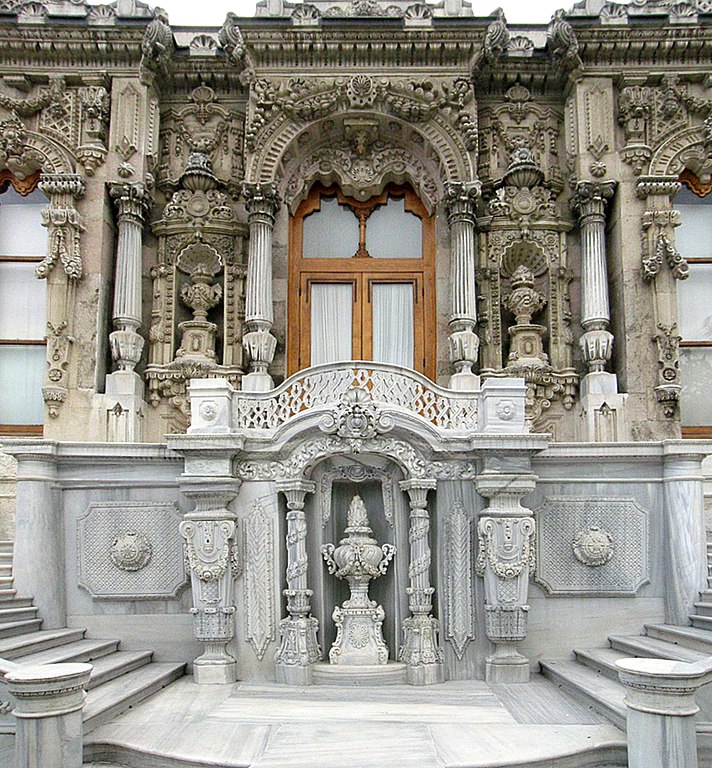

The Ihlamur Pavilion is a small, late-Ottoman building located on the European side of Istanbul. It was completed in the mid-19th century, long after the Baroque and Rococo Ages faded away in the rest of Europe. In spite of this, the Ihlamur Pavilion was heavily influenced by these two styles. Many of the key elements found in Rococo Architecture can be seen in the pavilion’s exterior. The Ihlamur Pavilion is one of only a few examples of Rococo & Late Baroque Architecture in Istanbul, in addition to other buildings like the Ortaköy Mosque and Dolmabahçe Palace.

Interested in Istanbul? Check out our article on the Architecture of Istanbul to learn more about the city’s historic buildings!
Response to Rococo: Neoclassical Architecture
Eventually, a new style known as Neoclassical Architecture emerged in Europe. This new style directly contrasted the frilly, complex, and excessive nature of Rococo Architecture. Neoclassical Buildings have a much more simplified and pragmatic design, and they borrow many elements from the Classical Architecture of the Ancient Greeks and Romans.
The image below shows the interior of Copenhagen Cathedral, one of many works of Neoclassical Architecture found in the Danish Capital of Copenhagen. Here, you can see many typical Neoclassical elements, including coffered ceilings, Doric Columns, and a white-washed color scheme. Neoclassical Architecture became extremely popular by the 1800s, and Neoclassical buildings can be found throughout Europe, North America, and the rest of the world.

Rococo Architecture Today
Although Rococo Architecture was a relatively short-lived style that lasted less than 100 years, it is still one of the major movements in architectural history. Rococo Buildings took many of the aspects of Baroque Architecture and greatly enhanced them – creating spaces that were incredibly grand, audacious, and inspiring. Rococo Architecture can be found in many of the world’s largest palaces, and it is a style that is synonymous with the autonomous rule of most 18th-century monarchies. The lavishness of the Rococo Age would eventually lead to major social and political changes in Europe, and over time, a new, more practical style known as Neoclassical Architecture would emerge as the world’s most dominant building form.

- About the Author
- Rob Carney, the founder and lead writer for Architecture of Cities has been studying the history of architecture for over 15 years.
- He is an avid traveler and photographer, and he is passionate about buildings and building history.
- Rob has a B.S. and a Master’s degree in Architecture and has worked as an architect and engineer in the Boston area for 10 years.
Like Architecture of Cities? Sign up for our mailing list to get updates on our latest articles and other information related to Architectural History.
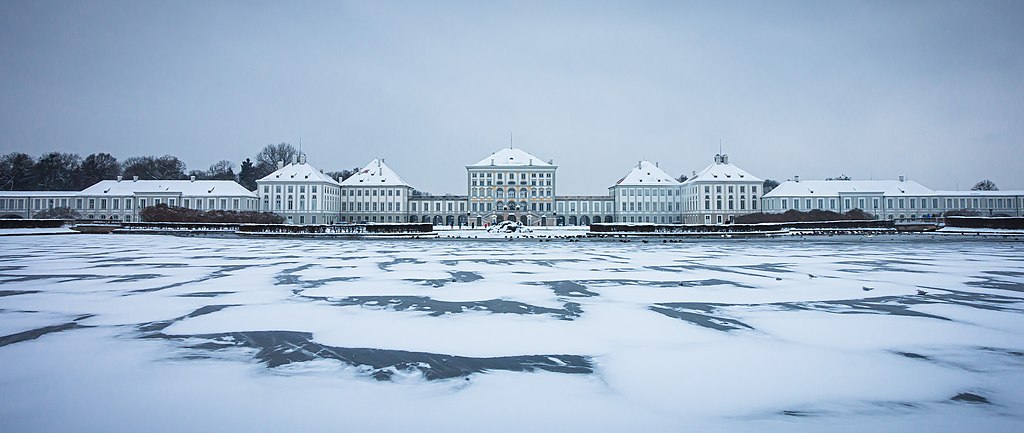
It contains many ornate rooms decorated in the Rococo Style.
